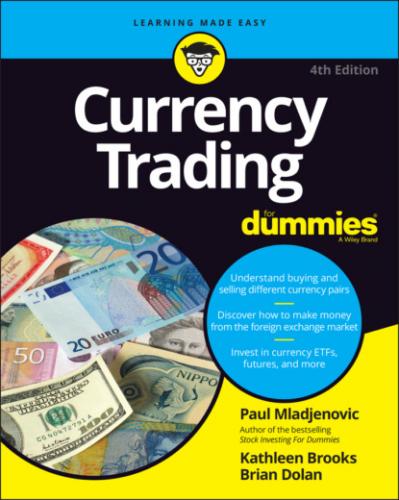We like to think of forex as the Big Kahuna of financial markets. The foreign exchange market — most often called the forex market, or simply the FX market — is the largest and most liquid of all international financial markets. (See the later section “Getting liquid without getting soaked” for our discussion of liquidity.)
The forex market is the crossroads for international capital, the intersection through which global commercial and investment flows have to move. International trade flows, such as when a Swiss electronics company purchases Japanese-made components, were the original basis for the development of the forex markets.
Today, however, global financial and investment flows dominate trade as the primary nonspeculative source of forex market volume. Whether it’s an Australian pension fund investing in U.S. Treasury bonds, a British insurer allocating assets to the Japanese equity market, or a German conglomerate purchasing a Canadian manufacturing facility, each cross-border transaction passes through the forex market at some stage.
The forex market is the ultimate traders’ market. It’s a market that’s open around the clock six days a week, enabling traders to act on news and events as they happen. It’s a market where half-billion-dollar trades can be executed in a matter of seconds and may not even move prices noticeably. That is what’s unique about forex — try buying or selling a half-billion of anything in another market and see how prices react.
Firms such as FOREX.com, Saxo Bank, Oanda, CMC Markets, and IG Group have made the forex market accessible to individual traders and investors. You can now trade the same forex market as the big banks and hedge funds.
SOME EYE-OPENING STATS ON TRADERS
“Ninety-five perfect of all traders fail.” How often have you heard that? If I (coauthor Paul) had a dollar for every time I heard that, I would’ve gotten back my money from my first failed trade! That is closer to the truth than you may realize, however. The folks at Tradeciety (www.tradeciety.com) posted the eye-opening results from a recent study that studied broker data about trading. Now I can’t attest to the veracity of these findings, but my gut and experience tell me this rings true. Here are some of the findings:
Eighty percent of day traders quit within two years.
Forty percent of traders quit after one month of activity.
Only 7 percent remain in their trading activity after five years.
Day traders with a strong past performance tend to continue doing well into the future. But only about 1 percent of all day traders are predictably profitable after factoring in fees and commissions.
Lower-income individuals tend to spend a greater portion of their income on lottery tickets, and they tend to increase lottery purchases as their income declines.
The study lists 24 findings, which can be found at https://tradeciety.com/24-statistics-why-most-traders-lose-money/. The big takeaway from this study is that traders (and speculators) are more apt to succeed when they approach trading as a disciplined activity coupled with ongoing education and sticking to proven and tested trading action plans. The biggest reasons cited for unsuccessful trading were that folks came in with big dreams of success but traded on emotion and guesswork. But I bet you guessed that.
Getting Inside the Numbers
Average daily currency trading volumes exceed $6.6 trillion per day (as of 2019). That’s a mind-boggling number, isn’t it? $6,600,000,000,000 — that’s a lot of zeros, no matter how you slice it. To give you some perspective on that size, it’s about 10 to 15 times the size of daily trading volume on all the world’s stock markets combined.
That $6-trillion-a-day number, which you may have seen in the financial press or other books on currency trading, actually overstates the size of what the forex market is all about — spot currency trading.
Trading for spot
Speculating in the currency market
While commercial and financial transactions in the currency markets represent huge nominal sums, they still pale in comparison to amounts based on speculation. By far the vast majority of currency trading volume is based on speculation — traders buying and selling for short-term gains based on minute-to-minute, hour-to-hour, and day-to-day price fluctuations.
Estimates are that upwards of 90 percent of daily trading volume is derived from speculation (meaning commercial or investment-based FX trades account for less than 10 percent of daily global volume). The depth and breadth of the speculative market means that the liquidity of the overall forex market is unparalleled among global financial markets.
The bulk of spot currency trading, about 75 percent by volume, takes place in the so-called “major currencies,” which represent the world’s largest and most developed economies (see Chapter 8 for details). Trading in the major currencies is largely free from government regulation and takes place outside the authority of any national or international body or exchange.
Additionally, activity in the forex market frequently functions on a regional “currency bloc” basis, where the bulk of trading takes place between the USD bloc, JPY bloc, and EUR bloc, representing the three largest global economic regions.
Trading in the currencies of smaller, less-developed economies, such as Thailand or Chile, is often referred to as emerging market or exotic currency trading. Although trading in emerging markets has grown significantly in recent years, in terms of volume it remains some way behind the developed currencies. Due to some internal factors (such as local restrictions on currency transactions by foreigners) and some external factors (such as geopolitical crises and the financial market crash, which can make emerging market currencies tricky to trade), the emerging-market forex space can be illiquid, which can be a turnoff for a small investor.
Getting liquid without getting soaked
Liquidity refers to the level of market interest — the level of buying and selling volume — available at any given moment for a particular asset or security. The higher the liquidity, or the deeper the market, the faster and easier it is to buy or sell a security.
